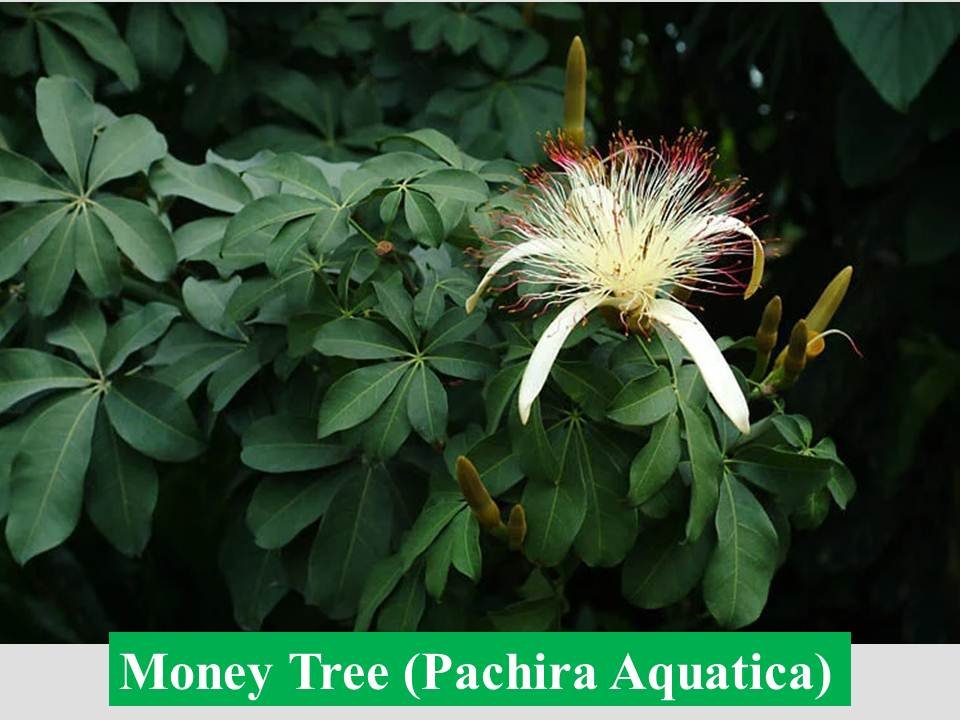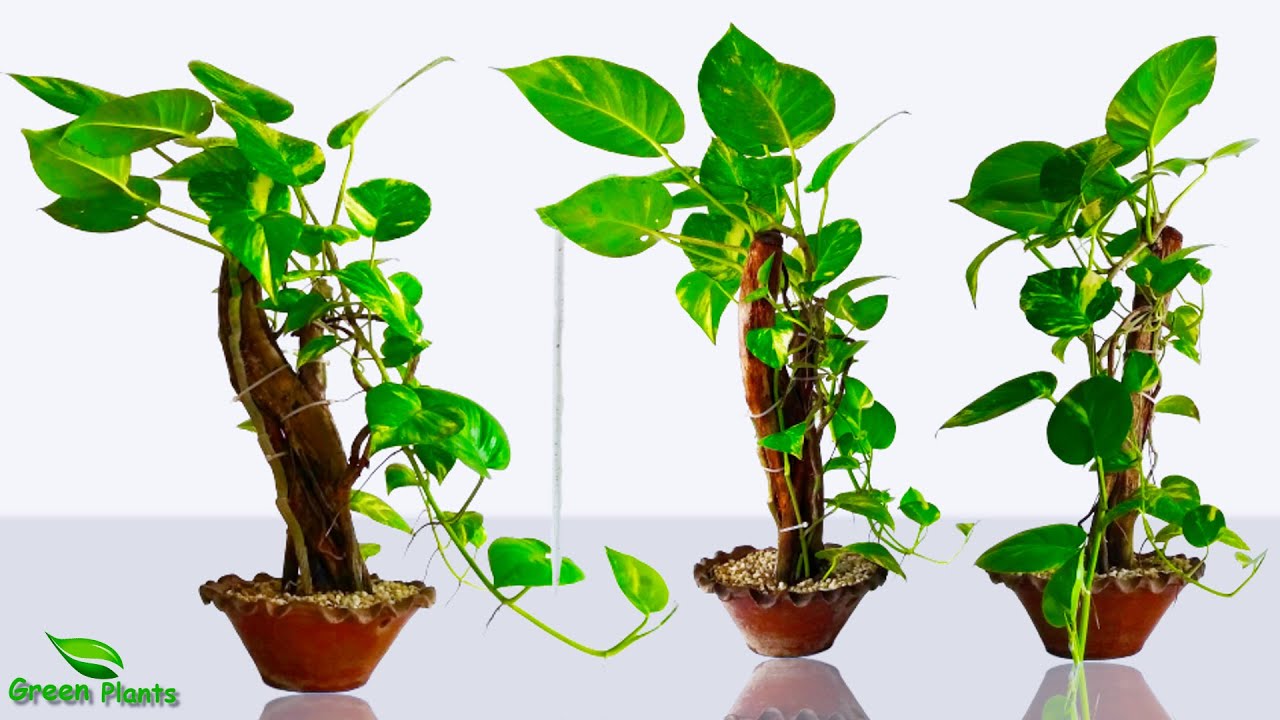Indulge in luxury with our hand-picked list of the 13 best Money Plant varieties for wealth and good vibes. Elevate your life with these lush wonders!.
Money plants have long been associated with prosperity and positive energy. These beautiful plants not only make your home look better, but they also bring you luck and money. This article will talk about money plants, how they are linked to wealth and good vibes, and the different kinds of money plants that can bring you plenty of money.
Money trees are associated with good luck, wealth, and prosperity in many cultures. Their unique coin-shaped leaves resemble currency, making them highly symbolic houseplants. While the braided Pachira aquatica is the most common type of money tree, many other plants also have round, coin-like foliage. Here are 10 plants that can pass as money trees with their unique leaf shapes.
Chinese Money Plant (Pilea peperomioides)
The Chinese money plant, also known as the missionary plant, lefse plant, pancake plant, UFO plant, or mirror grass, is easily recognizable by its almost perfect round leaves that resemble coins. Native to Southwestern China, the Pilea peperomioides is a popular houseplant belonging to the nettle family Urticaceae
This low-maintenance pet-friendly plant thrives in bright indirect light and moderately moist soil. It propagates easily through stem and leaf cuttings. With its easy-going nature, unique pancake-shaped foliage, and multitude of nicknames linking it to money, the Pilea peperomioides makes an excellent money plant.
Jade Plant (Crassula ovata)
The jade plant also called money plant dollar plant, money tree, and lucky plant, is another common houseplant known for its coin-shaped leaves. This succulent plant is native to South Africa and Mozambique and belongs to the Crassulaceae family.
With its shiny, round, jade-green leaves, the Crassula ovata makes a perfect money plant. It is versatile, resilient, and easy to care for. The jade plant can survive in a wide range of conditions but thrives in bright, indirect light. It is also able to tolerate some drought. The thick, glossy leaves and woody trunks resemble jade jewelry, giving this plant its name.
Money Tree (Pachira aquatica)
The money tree, also known as Malabar chestnut, saba nut, Guiana chestnut, provision tree, and monguba, is the most popular version of the money plant. Its braided trunk and bright green, palmate leaves are highly symbolic of a tree sprouting currency.
Native to Central and South America, this tropical wetland tree belongs to the mallow family Malvaceae. Money trees are relatively easy to care for and can grow up to 60 feet tall in the wild. However, indoor specimens are usually grown in pots and kept below 10 feet. Feng shui practitioners believe the Pachira aquatica brings good luck and prosperity.
Golden Pothos (Epipremnum aureum)
With its heart-shaped, satiny leaves, the golden pothos is one of the most popular houseplants. Native to the Solomon Islands, it is an evergreen vine belonging to the Araceae family. What’s interesting about the Epipremnum aureum is that juvenile leaves start out as small, palmate, coin-shaped leaves. As the plant matures, the leaves develop their distinct heart shape with golden-green variegation.
The pothos’ ability to produce coin-like leaves on younger vines makes it a great choice for braided money trees. It is also easy to care for, making it ideal for beginners. Golden pothos thrive in bright, indirect light and moderate watering.
Swiss Cheese Plant (Monstera deliciosa)
The tropical Swiss cheese plant, also called split-leaf philodendron, is named for its large, glossy, heart-shaped leaves with signature holes. But before the leaves fenestrate, the young Monstera deliciosa foliage starts out entire with a rounded shape. This makes the Monstera an interesting candidate for braided money trees in its juvenile stage.
Native to Central America, the Swiss cheese plant loves bright, indirect light and frequent watering. It is an easy-to-grow houseplant once you get its moisture and lighting preferences right. The Monstera deliciosa’s propensity to form coin-shaped leaves as a young plant qualifies it as a money tree lookalike.
Golden Queen (Scindapsus pictus)
Often confused with the pothos, the Golden Queen plant or scindapsus pictus has velvety, rounded, heart-shaped leaves that emerge as coins. Native to Southeast Asia, it belongs to the Araceae family and is commonly known as the satin pothos.
With its lush green and yellow variegated foliage, the Golden Queen makes an exceptional braided money tree. Position it in bright, indirect light and provide moderate watering and humidity. The scindapsus is poisonous, so keep it away from pets and children. As a vining plant, you can train it to grow along a moss pole or trellis.
Lucky Bamboo (Dracaena sanderiana)
A member of the Asparagaceae family, lucky bamboo is one of the most popular feng shui plants. With its cane-like stems and bright green leaves, it makes an excellent miniature money tree. Lucky bamboo isn’t technically a bamboo but a resilient, tropical Dracaena variety.
You can grow lucky bamboo in soil or water. Its upright, coin-shaped foliage resembles the appearance of money growing on trees. Native to Cameroon and Equatorial Guinea in Africa, lucky bamboo is a low-maintenance plant. Position it in indirect sunlight and change its water weekly. The plant’s hardiness and vibrant stems make it a favorite for feng shui enthusiasts.
Coin Leaf Peperomia (Peperomia polybotrya)
As the name suggests, the coin leaf peperomia has small, thick, widely spaced leaves that resemble pennies or coins. This tropical perennial epiphyte is native to South America and belongs to the pepper family Piperaceae. With its fleshy, succulent foliage, the peperomia polybotrya is ideal for containers and hanging planters.
Provide the Coin Leaf Peperomia with bright indirect light and allow the soil to partly dry out between waterings. High humidity is ideal, or you can mist the leaves occasionally. Its petite size and unique coin-shaped leaves make it perfect for desktop money plant arrangements.
Nickel Plant (Dischidia nummularia)
The nickel plant is an evergreen vining epiphyte with glossy, almost round leaves that resemble nickels. Native to Southeast Asia and part of the milkweed family Apocynaceae, it is also known as coin vine or hunter’s robe.
As an epiphytic plant, the Dischidia nummularia grows on other plants and trees in tropical jungles. As a houseplant, provide it a moss stick or trellis for support. Keep it in bright indirect light and water when the topsoil is partly dry. Humidity is essential for the nickel plant to thrive. Its dime-sized foliage makes it perfect for miniature money tree arrangements.
Tea Leaf Plant (Pilea involucrata)
The tea leaf plant goes by many names, including friendship plant, artillery plant, and gunpowder plant. Native to Southern China, this member of the nettle family Urticaceae is grown for its tiny, rounded leaves that resemble floating water droplets.
With high humidity and bright, indirect sunlight, the Pilea involucrata grows into a bushy, compact houseplant ideal for tables and desktops. Allow the soil to dry out between waterings. Propagate new plants from stem cuttings for more money tree lookalikes. The tea leaf plant’s unique coin-shaped foliage makes it a cute addition to mini money tree collections.
Grow Your Own Good Luck Charms
The next time you visit a nursery or plant store, look out for any of these plants with coin-shaped leaves. Growing miniature money trees with any of these lucky plants can make thoughtful gifts for special occasions. Their lush green foliage is also perfect for decorating work desks, coffee tables, bookshelves, tabletops, and any empty corner. Just remember to provide them with the proper growing conditions, and your money trees will thrive, perhaps bringing you some wealth along the way!
Lucky Bamboo (Dracaena Sanderiana)
Dracaena sanderiana, or “Lucky Bamboo,” is the scientific name for this popular and symbolic houseplant that people believe will bring them luck, wealth, and good energy. Lucky Bamboo is not actually bamboo, despite its name. It is a Dracaena plant, and its beautiful stalks and bright green leaves make it famous.

Also Read…
Money Tree (Pachira Aquatica):-
The Money Tree, whose scientific name is Pachira aquatica, is a well-known and symbolic houseplant that people believe will bring them luck, wealth, and good energy. It’s also called the Malabar Chestnut or the Guiana Chestnut, and its braided trunk and lush, hand-shaped leaves make it stand out.
The Money Tree’s leaves are compound, which means they are made up of many smaller leaflets arranged in a way that looks like an open hand. These leaves are vibrant green and contribute to the plant’s overall ornamental value.

Money Tree Care Guide – Picking, Placing, and Parenting Your Plant
- The Ultimate Guide to Growing Strawberries in Raised Beds - August 8, 2025
- No-Dig Garden Beds: The Easiest Way to Grow a Beautiful Garden - August 6, 2025
- How to Protect and Preserve Wood for Raised Garden Beds - August 6, 2025

